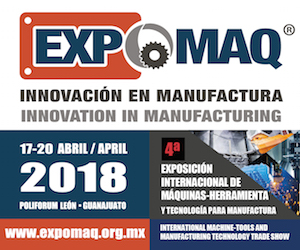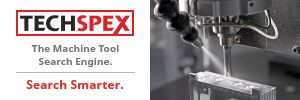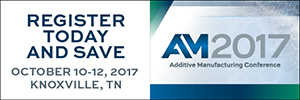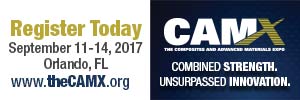
The COMET L3D 2 is designed for fast, precise, 3D data capture from an array of objects.

Hexagon has tailored both the ROMER arm and the TubeShaper software to facilitate tube inspection.

This surface finish and contour measuring system is specifically engineered for applications in industries including automotive.

Renishaw REVO-2 scanning probe on the end of the arm of a COORD3 Universal CMM.

Why blue light? It helps measure dark and reflective surfaces in variable lighting conditions. Then the Cobalt stereo cameras capture millions of high-resolution 3D coordinate measurements in seconds.
Related Suppliers
Carl Zeiss Industrial Metrology, LLC
FARO Technologies Inc.
Hexagon Metrology, Inc.
Mahr Federal Inc.
Renishaw Inc.
Getting 3D Data
The COMET L3D 2 from Zeiss (zeiss.com) was engineered from the start to be a compact, lightweight, 3D sensor system that can be readily deployed in a variety of areas—even cramped conditions, thanks to the fact that it requires a minimal working distance. Among the applications for the system are quality control/inspection, tool and model making and reverse engineering. (And archeology for those so inclined, but that would be a different magazine than this one.) Says Dr. Marcus Steinbichler, CEO of Carl Zeiss Optotechnik GmbH, “The 3D data capture of components and objects is fast and precise, offering superb performance. At the same time, the user has greater scope to perform a multitude of measuring tasks thanks to the unique flexibility of the system.â€
It features both a high-intensity lighting system and a fast camera, which means, explains Steinbichler,
“Even in difficult ambient conditions, the ZEISS COMET L3D 2 delivers precise 3D data, automatically recognizes changes in vibration and exposure and offers high-end technology for exceptional data quality with maximum ease of use. Moreover, the enormous light yield and the distinctively high measuring speed ensure reliable data capture on extremely different object surfaces. The result is a high level of efficiency in workflows and precise measurement of data.â€
Lenses can be quickly changed for different measurement fields. The five fields (or volumes in mm3) and their associated 3D point spacing in μm are: 45/18, 75/30, 100/48, 250/105, 500/196. The fastest measuring time is ~1 second.
The unit works with colin3D software for data acquisition, data processing and simple data comparison. It provides rapid triangle mesh generation, intuitive mesh processing, partial filling, mesh smoothing/sharpening, and mesh structure optimization. The platform can be integrated with CAD models so that scan data can be placed on a model’s surface, thereby providing the user with information regarding how closely the scanned object is to the math model. Reports can be automatically generated by the system.
Totally Tubular
Although there is certainly the proliferation of high-voltage wires throughout new vehicles, the number of tubes continues to be notable, especially as cooling of all of the proliferating electronic units becomes all the more critical. Hexagon Manufacturing Intelligence (hexagonmetrology.us) has developed TubeShaper software that works with its ROMER Absolute arm for tube inspection applications. Tube measurement plans can be automatically created and saved for future use during first-part inspection, as the user manipulates the measuring arm, or it can be defined and setup prior to measurement. Users can quickly switch between tube probes and touch probes without any required recalibration, which means that it is possible to check the positions of such things as welded flanges and brackets.
CAD models can be imported via IGES and STEP formats (as a standard feature); other formats (e.g., .par, .prt, .iam) are available, as well. For reverse engineering, tube and geometric data can be exported as IGES or SV files.
The software offers a real-time direct interface to CNC tube benders so that correctional data can be quickly calculated and applied within a production cycle so as to minimize scrap; multiple machines can be supported by a single seat of software.
The software features two different interfaces, tailored to the type of user. There is the Engineering Interface, which provides access to all functions, and the Shop-floor Interface, which is icon-based for ease of use. The software is compatible with Windows 8.1 touchscreens.
Reports can be formatted as required through drag-and-drop tools. Then measurement reports can be automatically generated as required. Â
Economical and CapableÂ
Surface Measurement
Think of this surface finish and contour measuring system as being the right tool for the right job. That is, listen to Kevin Akin, product manager-Form and Surface Metrology, Mahr Federal (mahr.com): “We call the MarSurf UD 130 an 'entry-level' system because it is a more economical version of our high-end MarSurf LD 130. It’s designed for applications in industries such as automotive or bearings that require high resolution, but which many not have the very high tolerance requirements of some optical or aerospace applications.â€
Which is not to say that the UD 130 is not capable. It has measuring speeds of up to 5 mm/second. It has a traveling length of 130 mm. The Z-axis measuring range is up to 20 mm. The resolution is 2 nm.
Notably, the system uses an interferometric probe system rather than an inductive probe system for superior data. Probe movement is registered by photo diodes. There are application-specific probe tip geometries: diamond tips with 2 µm and 5 µm radii for roughness measurements and ruby balls or carbide tips with 25 µm for contour measurements. Probes are held in place by a magnetic mounting system and proper positioning in the holder is assured by a ball-stop assembly. An electronic chip embedded in the probe arm assures that the selected probe is recognized.
The system uses Mahr’s XCR 20 CNC software for automatic measurements. The drive unit and the measuring stand axes of the UD 130 can also be controlled with a joystick.
Making the Most of a CMM
While you may be familiar with Perceptron (perceptron.com) through its precision non-contact automated dimensional measurement and gauging systems that have been installed in assembly plants the world over, the company also has five-axis coordinate measuring machines (CMMs) on offer, such as the COORD3 Universal. It is equipping the CMMs with the Renishaw REVO-2 scanning probe, about which Elliott Mills, the company’s CMM product sales director, says, “By combining the metrology stability of the COORD3 Universal CMMâ€â€”it has an isostatic design for each axis that provides optimum machine geometrical alignment in the construction of the machine and an alloy moving-frame design—“with the latest Renishaw REVO-2 five-axis measuring system, CMM dynamic error is minimized for high-speed probe motion since all part feature scanning motion is within the REVO-2 head.â€
And he goes on to say of that head, it “is the only scanning system for CMMs that simultaneously controls the motion of three CMM and two probe head axes, while collecting workpiece data using its range of 3D tactile probes, surface roughness measurement probe, and non-contact vision probe. It uses laser measurement for precise workpiece measurement at extremely high rates of data capture. Scanning rates of 500 mm/second can now be achieved that are 20-times faster than traditional three-axis scanning CMMs.â€
The CMM features a 90 x 90-mm Z-ram section, direct axis drives with toothed drive belts, and a monolithic base plate with an integral inverted dovetail guideway. There is a thermal compensation system that allows the system to provide its stated measuring accuracy (from 1.5 + L/333; machines are available to accommodate parts up to 3,000 x 1,500 x 1,200 mm) between 16° and 26°C. Gold-plated 0.1 µm measuring scales in free-floating support tracks eliminate the effect of CMM structural changes on measurement accuracy.
Depending on machine size, the maximum positioning speed is 866 mm/sec and the maximum acceleration is 1,500 mm/sec2. Â
This Blue Light Is Special
The Cobalt 3D Imager from FARO Technologies (faro.com) integrates blue light projection, high-resolution stereo cameras and on-board processing such that it provides fast and consistent 3D measurement.
According to Dr. Simon Raab, FARO president and CEO, the system lends itself to application right within a workflow thanks to a patent-pending, on-board processing feature. This also contributes to the capability of having multiple 3D imagers organized into arrays throughout an operation, all being controlled by a single computer.
Explained Raab, “Coupled with FARO's CAM2 Measure 10 software, an unlimited number of Cobalt sensors can simultaneously capture large surface areas or complex assemblies. The configurable field of view, intelligent on-board point cloud processing and resolution can adapt to multiple measurement needs. Our analysis shows that for dedicated inspections of large products or assemblies, a fixed multiple imager array of Cobalt sensors will be faster, more easily integrated, more affordable, more accurate and easier to maintain than purchasing the robot-based imager or laser line systems currently on the market. Yet, Cobalt can also outperform as a robot-based system with its high resolution and data processing speeds in combination with its low profile and light weight."
That said, the Cobalt can be integrated with a rotary table, robot or into a conventional industrial inspection cell. Â Â
Â








